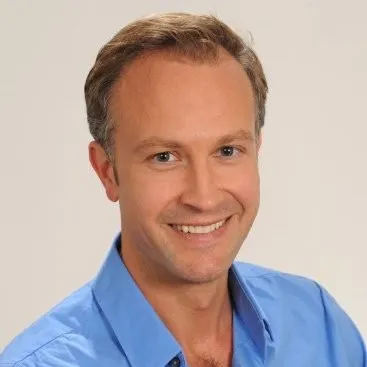19 July 2021|Latest Posts, Meet the Successful Founder

Peter Szyszko, is the CEO and founder of White Bullet, an industry-leading anti-piracy platform. The software protects IP rights owners, advertisers and brands in a complex and evolving pirate universe. White Bullet’s risk profiling AI detects, dynamically scores and flags unsafe domains, apps and advertising. Peter has worked in intellectual property law for two decades and is committed to ridding the digital industry of the scourge of piracy. We were delighted to catch up with Peter recently as part of our popular Meet the Successful Founder series.
Can you tell us a little about your background and the company?
White Bullet’s core product is our IP Infringement Platform (IPIP), which sucks in information about websites and apps that infringe third-party intellectual property, such as movies, games, software and so on, and the advertising that funds that. We have been around for eight years now, and the measure of our success is probably our growth: we’re increasing our annual recurring revenue yearly.
How did the idea come to you for the company?
I’m an intellectual property lawyer and spent 20 years protecting media content for Hollywood studios and the software industry, among others. I stepped out and set the company up in order to provide commercial products to industries that needed help understanding how to differentiate illegal and legal online content platforms; it has to be done through effective tools, and the most efficient way to do that at scale is by using AI technology.
How did you achieve awareness?
We started the business from scratch so had very little money at launch. I was riding around London on an old moped, going out and seeing eight to ten prospects a day, seeking to test market opportunity prior to launching the business. In order to validate product, we took an approach that was probably risky, but I think was the right one. As soon as we started to build the tech, we took on partners who could help us demonstrate the need for products of this kind. For instance, one of the first projects we ever did was with the City of London Police and the Intellectual Property Office.
That meant that we were making sales even as we were growing, very early on – which in turn allowed us to demonstrate proof of concept, and to show that there was a desire for these products in the market.
A lot of the growth and awareness we have seen – and also the way we’ve sustained and maintained customers – has come down to the fact that our clients have referred us to contacts or colleagues as someone who has done a great job for them.
How have you been able to gain funding and grow?
For early finance, I used my credit cards, loans, family borrowing, savings and moved out of my house, in order to launch the business. You have to be committed to it and if you really want something to work, you’ll do just that.
Since we’re in quite a niche but necessary sector, we were able to quickly bring in some key partner clients. Within about a year, we already had about ten customers and we very swiftly started to gain traction.
What are the key successes and challenges?
When you start something up, you’ve got a choice of either getting something to market super-quick that might be prototype and then adapt it, with the risk that customers don’t like what you’ve created or that it doesn’t work to full spec. Or you run the other risk, which is to build more slowly and potentially over-engineer a final product that is late to market. As a company, we have tried to take the best aspects of both approaches; we launched a more developed prototype into the market and then worked with real clients to perfect it.
What are your plans now/for the future?
We are continually evolving and expanding, undertaking research and development. Outside of websites and apps, we’re now looking at the pirate OTT app environment and pirate connected TV apps, which is growing. In many cases, it is an unknown area to rights-holders as it can be difficult to track.
What would you like to share with others to encourage them to start their own entrepreneurship journey?
Make sure you talk to your potential customers but put a filter on what you hear. What you don’t want is a bunch of spin-off ideas that don’t align with your business goals and plan. The danger is that you come away thinking “we could build that” in order to just win those customers – and that isn’t always a smart strategy.
Can you share your tips for entrepreneurial success?
Talk to people you can trust about how easy or difficult it is to do it. I think a lot of people, very rightly in most cases, will just launch something and get it started. I think that’s the right thing to do because you don’t want to be procrastinating. But at the same time, you need to have someone you can talk to, to say, ‘do you think I’m doing this right?’ So try to find that trusted confidant.
I think the second thing, as I’ve said, is to make sure you are true to what you want to create. So get advice, get input from potential clients and see how you should shape what you are planning on doing to something they actually want, because knowing what the customer wants is key.
The third piece of advice is really just to take a deep breath and realise that nobody else is on the same planet as you. Suddenly you’re obsessed with this “baby” and that can be tough for other people to understand.
Who is the person who inspires you the most?
A great book from an inspiring business leader that jumps out was From Vision To Exit by Guy Rigby. It actually was incredibly helpful, because it gave me a very good sense of all the things to think about when building a company. It talks about everything from finding a name for the company to selling the company, and all steps in between:
What are your social handles and website links so our readers can connect with you?
- www.white-bullet.com
- https://www.white-bullet.com/brandprotect
- https://www.linkedin.com/company/whitebullet-solutions-limited/
- https://twitter.com/whitebullettech
-
lisafoundersitehttps://thesuccessfulfounder.com/author/lisafoundersite/
-
lisafoundersitehttps://thesuccessfulfounder.com/author/lisafoundersite/
-
lisafoundersitehttps://thesuccessfulfounder.com/author/lisafoundersite/
-
lisafoundersitehttps://thesuccessfulfounder.com/author/lisafoundersite/






